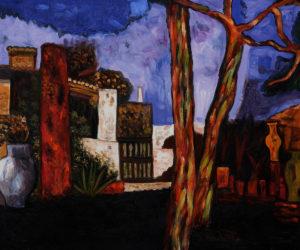Art
Paul Klee: Artistic Experimentations on Canvas
 Painting should be easy. Feelings on canvas. Deep struggles along a poor life. Dreams of a far away childhood. The pain of the body or of a broken heart. All of these made great themes for paintings. However, it is not enough to have a miserable life and just crave it on the canvas. You have to know techniques. Most of the great painters explored many styles.
Painting should be easy. Feelings on canvas. Deep struggles along a poor life. Dreams of a far away childhood. The pain of the body or of a broken heart. All of these made great themes for paintings. However, it is not enough to have a miserable life and just crave it on the canvas. You have to know techniques. Most of the great painters explored many styles.
Paul Klee is the artist who discovered colors after being trapped for many years in the black-and-white style of drawing. After becoming a painter, he put down in his memoirs the methods he adopted in order to make his paintings.
At the beginning of his artistic career, in 1903, Klee begun working on a cycle of eleven etchings, called ‘Inventionen’. These were his first experiments that lasted until 1905. The ‘Inventionen’ works were part of an international exhibit of the Munich Secession, in June 1906. The mechanism was rather simple. He drew with a needle on a blackened pane of glass. From this Klee developed his glass-pane technique that had the attention on the contrast between dark and light. This technique was applied on fifty-seven art works.
Klee and wrote about his technique in his diary:
1. Cover the pane evenly with white tempera, perhaps by spraying on a diluted mixture
2. After it has dried, scratch the drawing into it with a needle
3. Cover the back with black or colored areas.”
The spray used by Klee in his earlier ‘Inventionen’ is later applied on canvas. He covered part of the paper with a stencil and sprayed the free places with water colors.
Another experiment in Klee’s early years was with colors. The content of a picture such as a landscape was not important, but the shapes were. His first attempt in including colors in his paintings is by using dark tonalities. He also combined the graphic techniques and used both charcoal and watercolor, such as in “In the Ostermundingen Quarry, Two Cranes”, made in 1907.
Later he started applying one layer of paint on top of another in his colored works, in order to attain certain tones.
 Despite his attempts to reproduce landscapes, the abstraction is the style that made him famous. Klee describes his view on abstraction in his diaries: “Abstract? Being abstract as a painter is not the same as abstracting natural objective ways of comparison but, independent of these possible forms of comparison, is based on the extraction of pictorially pure relations: light and dark, color to light and dark, color to color, long to short, broad to narrow.”
Despite his attempts to reproduce landscapes, the abstraction is the style that made him famous. Klee describes his view on abstraction in his diaries: “Abstract? Being abstract as a painter is not the same as abstracting natural objective ways of comparison but, independent of these possible forms of comparison, is based on the extraction of pictorially pure relations: light and dark, color to light and dark, color to color, long to short, broad to narrow.”
So Klee describes the abstraction as a requirement on how the artist paints a picture and not that of the picture’s message to the public. This idea Klee included in his work “In the Kairouan-style”, a painting made after his journey to Tunisia, that lasted twelve days in 1914.
The oil transfer drawing is another of Klee’s techniques developed during his lifetime. Aided by a piece of paper covered with black oil paint, he transferred a drawing onto another piece of paper or surface used for painting. The lines of the tracing appear slightly blurred. The pressure applied in tracing made smudged patches that he didn’t let out from the picture, but included them too. Afterward, the artist added watercolors. He used this technique in the painting “The Tightrope Walker,” made in 1923.
Paul Klee’s experiments included, in his maturity, psychological theories, such as the one developed by Ernst Mach and written in the book “The Analysis of the Sensations and the Relations of the Physical to the Psychic.” One of his paintings that shows Mach’s ideas is “monsieur Pearly Pig”. The theory says that, although a square and a rhombus are identical, they are not perceived as such. The rhombus appears in movement and rather larger than the square. In order to counteract this, in his painting, Klee enlarges the square so the viewer perceives them as equal.
In the end is seems that a painter’s style is not made out of one technique, but a sum. Klee made numerous experiments during his lifetime in order to be satisfied with his creations. The fact that he was his own critic made his search through different styles and techniques more ardent. Nevertheless, this quest was not in vain for he found his own style. Just as a man’s personality and character are polished according to the events he encounters in his lifetime.




